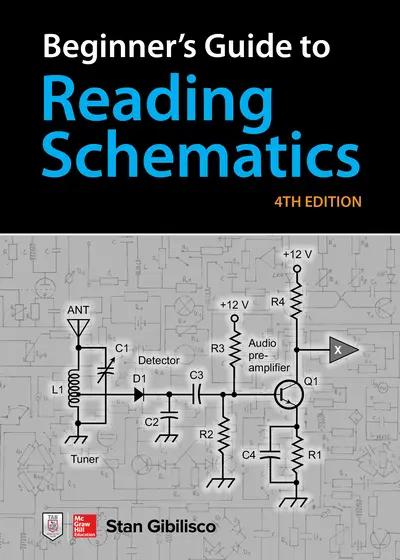My Account Details

ISBN10: 1260031101 | ISBN13: 9781260031102

Step 1 . Download Adobe Digital Editions to your PC or Mac desktop/laptop.
Step 2. Register and authorize your Adobe ID (optional). To access your eBook on multiple devices, first create an Adobe ID at account.adobe.com. Then, open Adobe Digital Editions, go to the Help menu, and select "Authorize Computer" to link your Adobe ID.
Step 3. Open Your eBook. Use Adobe Digital Editions to open the file. If the eBook doesn’t open, contact customer service for assistance.
1 The Master Plan
Block Diagrams
Schematic Diagrams
Schematic Symbology
Component Interconnections
A Visual Language
2 Block Diagrams
A Simple Example
Functional Drawings
Current and Signal Paths
Flowcharts
Process Paths
Summary
3 Components and Devices
Resistors
Capacitors
Inductors and Transformers
Switches and Relays
Conductors and Cables
Diodes and Transistors
Operational Amplifiers
Electron Tubes
Electrochemical Cells and Batteries
Logic Gates
Summary
4 Simple Circuits
Getting Started
Component Labeling
Troubleshooting with Schematics
A More Sophisticated Diagram
Schematic/Block Hybrids
A Vacuum-Tube RF Amplifier
Three Basic Logic Circuits
Summary
5 Complex Circuits
Identifying the Building Blocks
Page Breaks
Some More Circuits
Getting Comfortable with Large Schematics
Op Amp Circuits
Summary
6 Diagrams for Building And Testing
Your Breadboard
Wire Wrapping
Kirchhoff’s Current Law
Kirchhoff’s Voltage Law
A Resistive Voltage Divider
A Diode-Based Voltage Reducer
Mismatched Lamps in Series
A Compass-Based Galvanometer
Summary and Conclusion
A Schematic Symbols
B Resistor Color Codes
C Parts Suppliers
Suggested Additional Reading
Index
Need support? We're here to help - Get real-world support and resources every step of the way.